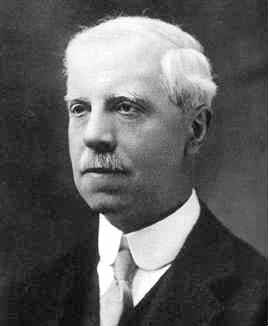Famous Thomas Little Heath Quotes
A History of Greek Mathematics (1921) Vol. 1. From Thales to Euclid
p, 125
Achimedes (1920)
p, 125
Achimedes (1920)
Preface, p. ix
Apollonius of Perga (1896)
Preface p. v
A History of Greek Mathematics (1921) Vol. 1. From Thales to Euclid
Thomas Little Heath Quotes about mathematics
Preface p. viii
A History of Greek Mathematics (1921) Vol. 1. From Thales to Euclid
Source: Achimedes (1920), Ch. I. Archimedes, p.1
Achimedes (1920)
Preface p. vi
A History of Greek Mathematics (1921) Vol. 1. From Thales to Euclid
A History of Greek Mathematics (1921) Vol. 1. From Thales to Euclid
A History of Greek Mathematics (1921) Vol. 1. From Thales to Euclid
Thomas Little Heath Quotes about problems
A History of Greek Mathematics (1921) Vol. 1. From Thales to Euclid
Apollonius of Perga (1896)
p, 125
Achimedes (1920)
under Hipparchus, Menelaus and Ptolemy
A History of Greek Mathematics (1921) Vol. 1. From Thales to Euclid
Apollonius of Perga (1896)
Thomas Little Heath Quotes
Source: Diophantos of Alexandria: A Study in the History of Greek Algebra (1885), Ch. II, p.37
p, 125
Achimedes (1920)
Introduction, p. v
The Thirteen Books of Euclid's Elements (1908)
p, 125
Achimedes (1920)
Achimedes (1920)
p, 125
Achimedes (1920)
The Thirteen Books of Euclid's Elements (1908)
Preface p. v
A History of Greek Mathematics (1921) Vol. 1. From Thales to Euclid
The Thirteen Books of Euclid's Elements (1908)
p, 125
Apollonius of Perga (1896)
Achimedes (1920)
p, 125
Achimedes (1920)
p, 125
The Thirteen Books of Euclid's Elements (1908)
Achimedes (1920)
The Thirteen Books of Euclid's Elements (1908)
Preface p. vi
A History of Greek Mathematics (1921) Vol. 1. From Thales to Euclid
Diophantos of Alexandria: A Study in the History of Greek Algebra (1885)
this implies the use of similar triangles in the way that the Egyptians had used them in the construction of pyramids
Achimedes (1920)
“Almost the whole of Greek science and philosophy begins with Thales.”
Source: Achimedes (1920), Ch. II. Greek Geometry to Archimedes, p.8
Achimedes (1920)
p, 125
Achimedes (1920)
Preface p. v
A History of Greek Mathematics (1921) Vol. 1. From Thales to Euclid
Historical Introduction, p.17
Diophantos of Alexandria: A Study in the History of Greek Algebra (1885)
A History of Greek Mathematics (1921) Vol. 1. From Thales to Euclid
Preface p. v
A History of Greek Mathematics (1921) Vol. 1. From Thales to Euclid
The point P where the two parabolas intersect is given by<center><math>\begin{cases}y^2 = bx\\x^2 = ay\end{cases}</math></center>whence, as before,<center><math>\frac{a}{x} = \frac{x}{y} = \frac{y}{b}.</math></center>
Apollonius of Perga (1896)
“The Pythagoreans discovered the existence of incommensurable lines, or of irrationals.”
This was, doubtless, first discovered with reference to the diagonal of a square which is incommensurable with the side, being in the ratio to it of √2 to 1. The Pythagorean proof of this particular case survives in Aristotle and in a proposition interpolated in Euclid's Book X.; it is by a reductio ad absurdum proving that, if the diagonal is commensurable with the side, the same number must be both odd and even. This discovery of the incommensurable... showed that the theory of proportion invented by Pythagoras was not of universal application and therefore that propositions proved by means of it were not really established. ...The fatal flaw thus revealed in the body of geometry was not removed till Eudoxus discovered the great theory of proportion (expounded in Euclid's Book V.), which is applicable to incommensurable as well as to commensurable magnitudes.
Achimedes (1920)
